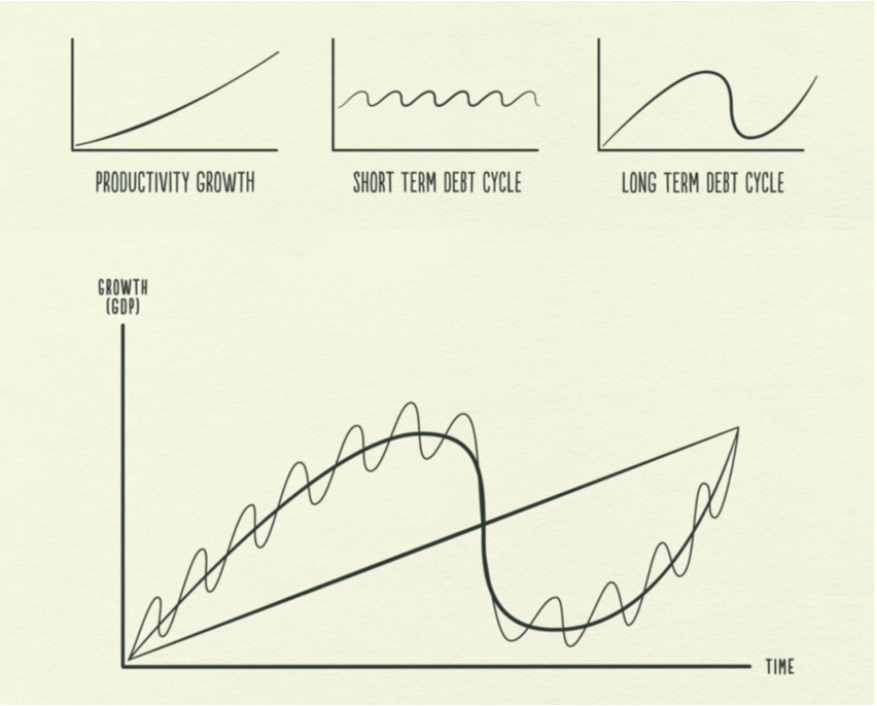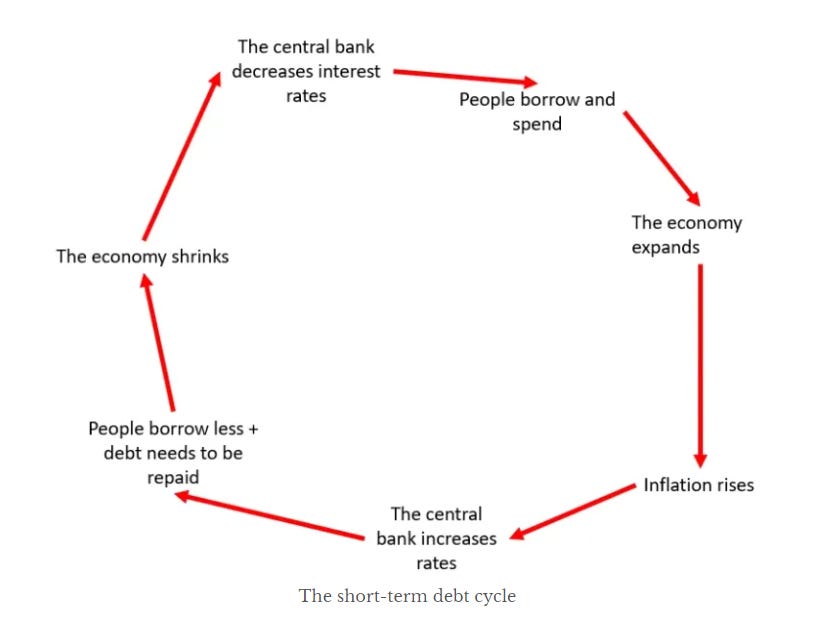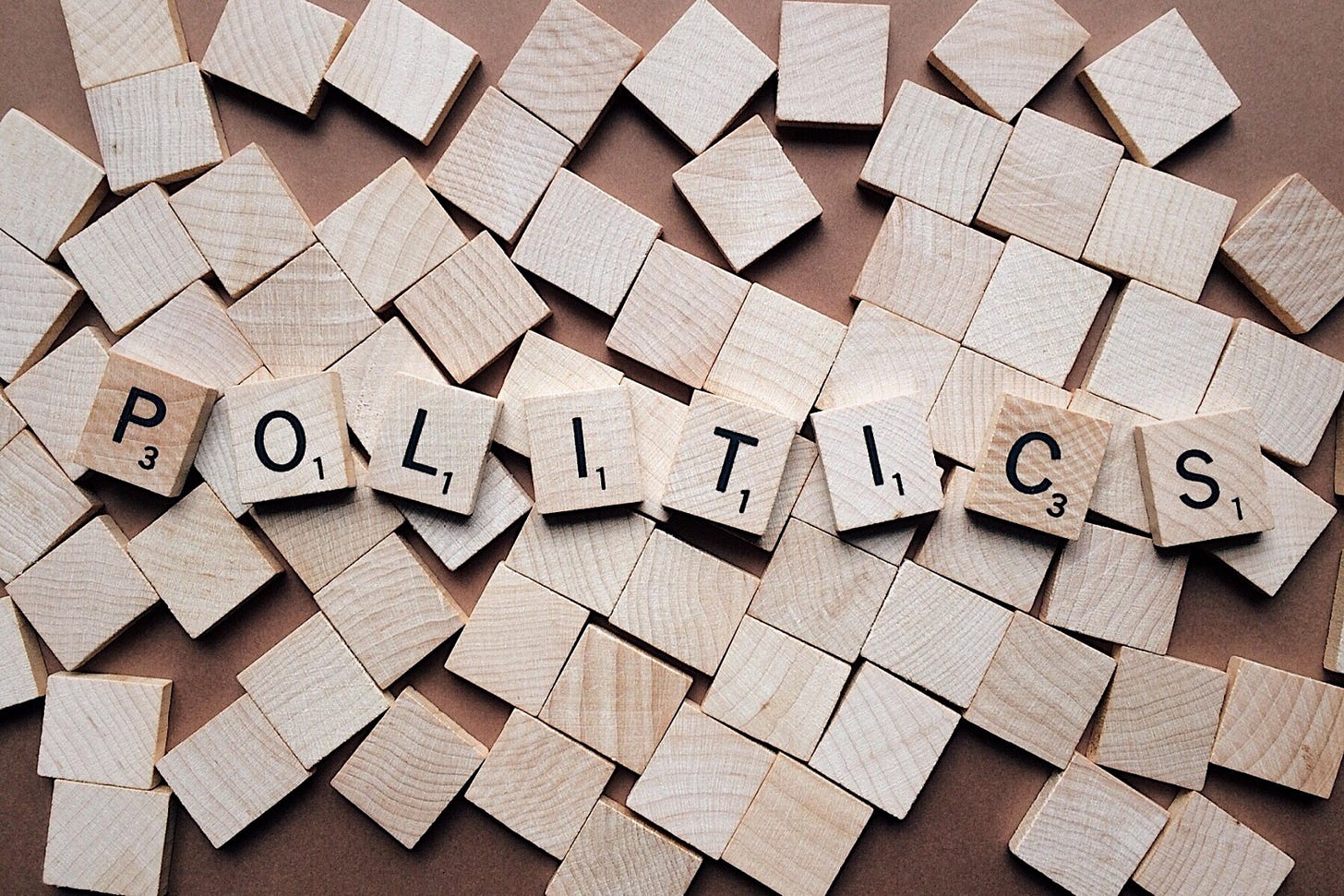Ray Dalio's Framework
Understanding the Forces Driving Economic Cycles and Predicting Future Trends
Ever wondered what drives the economy’s ups and downs?
Ray Dalio, one of the world’s most respected investors, has developed a powerful framework to understand and predict economic cycles.
From the quiet but steady force of productivity to the dramatic impact of debt cycles and political decisions, Dalio’s approach breaks down the complex dynamics shaping our world.
In this article, we’ll dive into the four key forces driving the economy, the critical equilibriums that ensure stability, and how central banks and governments use policy to steer the course. If you’re looking to gain deeper insights into how economic cycles work and what lies ahead, this is a must-read.
Ray Dalio, the renowned founder of Bridgewater Associates, has spent decades analyzing global financial systems and their cyclical nature. At the core of Dalio’s framework is the concept of "big cycles" — long-term debt cycles that span decades, and "short-term cycles" that fluctuate over several years
Four Big Forces Driving the Economy

1. Productivity:
Dalio’s View: Productivity is the most critical long-term driver of economic growth. It depends on innovation, education, and capital investment. Unlike other forces, productivity increases steadily over time and is less volatile.
Explanation: Think of productivity as the engine that determines the potential output of an economy. When workers, technology, and businesses operate efficiently, economies grow. However, it’s a slow-moving force that builds up over decades.
Dalio’s Quote: "Productivity matters more than anything else over the long term. If you don’t increase productivity, you can’t grow sustainably."
2. The Short-Term Debt Cycle :
Dalio’s View: This cycle, lasting around 5–10 years, arises due to credit expansion and contraction. During this cycle, central banks influence spending by adjusting interest rates.
Explanation: When credit is cheap (low interest rates), spending increases, leading to economic booms. But when debts grow too large, spending slows, and the economy contracts. Central banks attempt to smooth out these cycles using monetary policy.

Dalio’s Quote: "The short-term debt cycle is like the tide—it comes in and out, but it doesn’t change the underlying terrain."
3. The Long-Term Debt Cycle :
Dalio’s View: The long-term debt cycle, spanning 50–75 years, is driven by the accumulation and eventual deleveraging of debt. Over time, small cycles of borrowing and spending compound, leading to excessive debt levels that cannot be sustained.
Explanation: As debt builds, economic growth slows due to rising repayment burdens. Deleveraging occurs when debt levels become unsustainable, involving defaults, restructurings, or inflationary measures. Central banks and governments intervene with policies like printing money or fiscal stimulus to restore balance, often resetting the cycle.
Dalio’s Quote: "The long-term debt cycle defines the end of eras—when the rules of the game fundamentally change."
4. Politics:

Dalio’s View: Political decisions shape how economic issues are addressed, particularly during crises. They determine the distribution of wealth, taxation, and government spending.
Explanation: Political ideologies often influence how countries handle inequality, inflation, and debt crises. Political stability is essential for sustained economic growth.
Dalio’s Quote: "Politics and economics are two sides of the same coin. Together, they decide the direction of history."
Three Important Equilibriums
1. Debt Growth vs. Income Growth:
Dalio’s View: Debt should grow in line with the income needed to service it. When debt grows too fast, it leads to bubbles; when it grows too slow, economies stagnate.
Interpretation: Sustainable debt growth ensures that borrowers can pay back their loans without causing economic distress.
2. Economic Capacity Utilization:
Dalio’s View: Economies should operate at an optimal level where neither inflation (too high utilization) nor unemployment (too low utilization) gets out of control.
Interpretation: Efficient utilization of resources ensures a balance between growth and stability. Overheating or underuse of capacity leads to problems like inflation or recession.
3. Risk Premiums Across Assets:
Dalio’s View: The returns on equities should be higher than bonds, and bonds should offer higher returns than cash, accounting for risk premiums. This equilibrium encourages efficient capital allocation.
Interpretation: When these relationships break down, it often signals distortions in the market, like excessive risk-taking or lack of confidence.
Two Levers of Policy

1. Monetary Policy
Dalio’s View: Central banks use monetary policy (interest rates, money supply, and credit availability) to influence economic activity.
Key Insight: In times of crisis, central banks lower interest rates or use quantitative easing to inject liquidity. However, monetary policy has its limits, particularly in a deleveraging phase.
Dalio’s Quote: "Monetary policy is the central bank’s steering wheel, but it’s not a magic wand."
2. Fiscal Policy
Dalio’s View: Governments use taxation and spending to stimulate or slow economic activity. Fiscal policy plays a vital role when monetary policy becomes ineffective.
Key Insight: Fiscal policy often reflects political choices, making it harder to deploy quickly or effectively compared to monetary policy.
Dalio’s Quote: "Fiscal policy is like a sledgehammer—it works, but it’s not always precise."
Economic and Market Movements as a Perpetual Motion Machine
Dalio links economic movements to a perpetual motion machine powered by these interactions. Productivity provides the steady upward pull, while debt cycles and politics create the ups and downs. The two levers—monetary and fiscal policy—are tools used to stabilize the machine when it veers off course.
Dalio’s Quote: "It’s all interconnected—a beautifully complicated system that balances itself over time, but only if managed well."
Key Insights from Dalio’s Framework
The Importance of Cycles: Understanding both short-term and long-term cycles helps predict market behavior and economic conditions.
Balancing Equilibriums: Sustainable economic growth depends on maintaining these three equilibriums. When any one of them breaks, instability follows.
Policy Tools: Both monetary and fiscal policies have their strengths and weaknesses. Using them wisely requires understanding the current economic context and constraints.
Role of Politics: Political decisions often determine how crises are managed and whether they lead to growth or stagnation.
How Dalio's Framework Helps Predict Economic Cycles
Dalio’s framework offers a comprehensive approach for predicting economic cycles by considering debt dynamics, productivity, policy responses, and political influences. By recognizing where the economy stands within these cycles, analysts can make informed forecasts about future economic conditions.
Key Components of Dalio's Framework
Understanding Economic Cycles
Short-Term and Long-Term Debt Cycles: Dalio’s emphasis on both short-term (5–10 years) and long-term (50–75 years) debt cycles helps predict economic trends. The short-term cycle reflects credit availability and its impact on economic expansions and contractions, while the long-term cycle accounts for the accumulation of unsustainable debt, often leading to economic resets.
Productivity as a Driver
Role of Productivity: Long-term productivity growth is a key driver of economic expansion. By tracking productivity trends—factors such as innovation, education, and capital investment—analysts can forecast future growth rates and assess overall economic health.
Equilibriums and Imbalances
Maintaining Economic Equilibriums: Dalio identifies three critical equilibriums: debt growth vs. income growth, economic capacity utilization, and risk premiums across assets. Monitoring these equilibriums allows analysts to predict when economies are likely to experience instability or crises, especially if debt growth outpaces income growth.
Policy Responses
Monetary and Fiscal Policy: Central banks and governments play a crucial role in managing economic cycles through monetary and fiscal policies. Understanding how these policy tools are deployed—especially during downturns—helps analysts predict how economies will respond to external shocks and crises.
Closing Thoughts
The economy is not random. By understanding its key forces and cycles, we can navigate challenges and identify opportunities. Remember, it's all about balance-between productivity, debt, and policy.
The beauty of economics is in its predictability, but only if we're disciplined enough to see the patterns.
Conclusion:
Ray Dalio’s framework offers a clear understanding of the forces driving economic cycles, including productivity, debt cycles, and political influences. By highlighting key equilibriums—debt vs. income growth, economic capacity, and risk premiums—Dalio provides a guide for predicting market trends and economic stability. While monetary and fiscal policies are essential for managing economic fluctuations, maintaining balance among these forces is crucial to avoid instability. Ultimately, the work of Dalio manages to give investors and policymakers an edge when it comes to anticipating the economy and pacifying the ups and downs.
If you like the hard work we put in, you can invest in us:
For our Non-Indian audience: You can donate to us through PayPal. Click here.
For our Indian audience, UPI QRs are given below:





